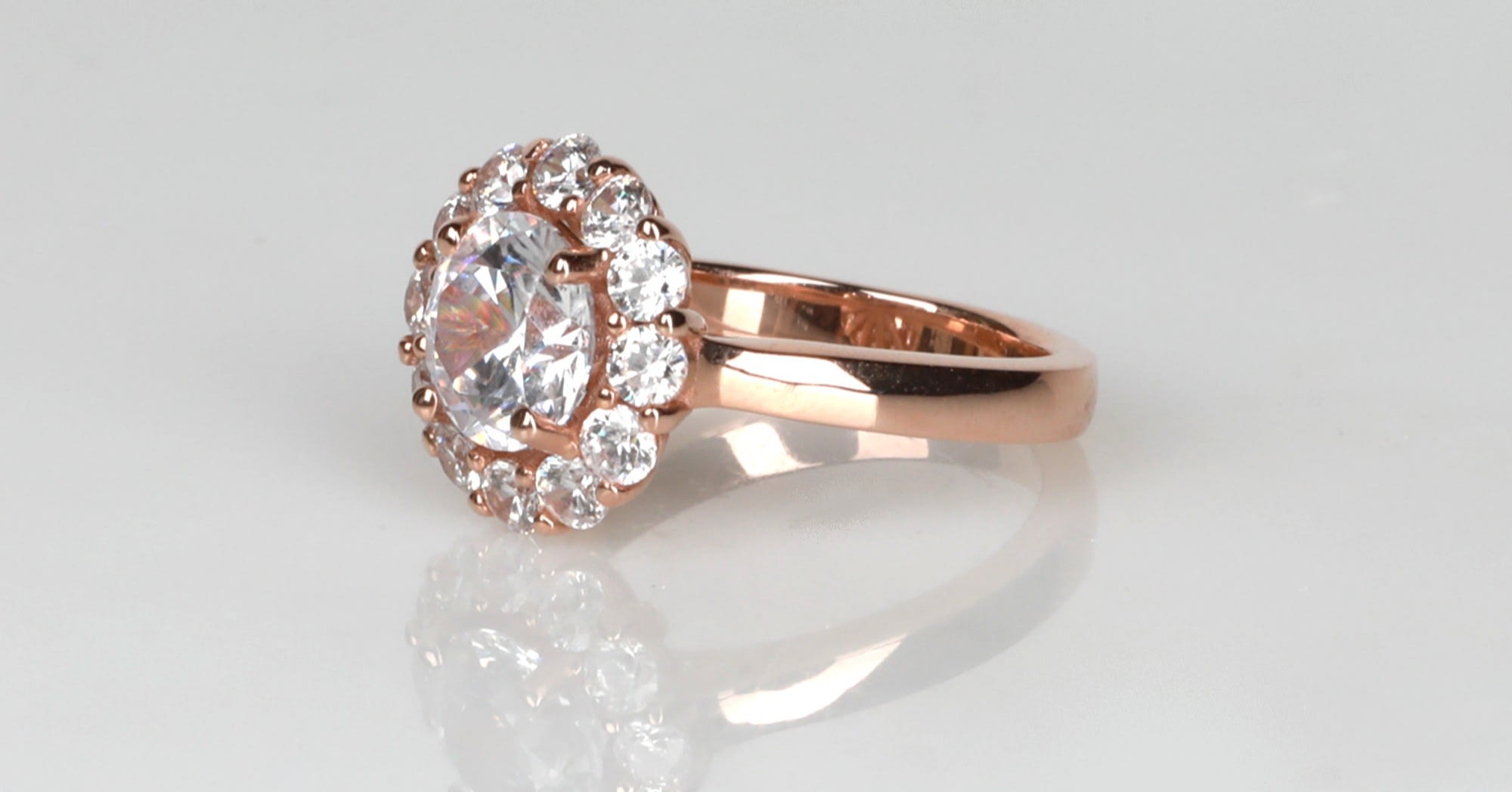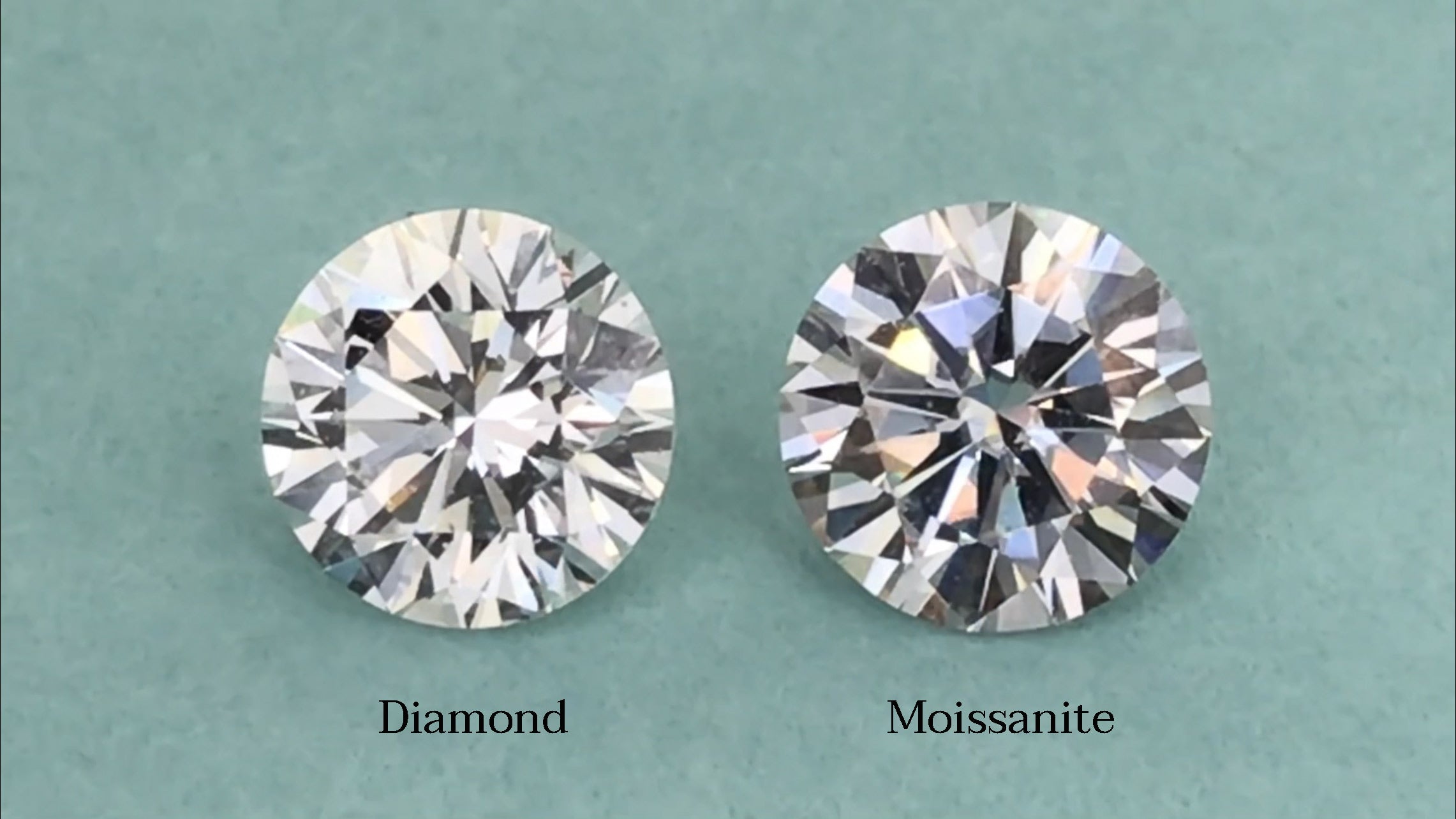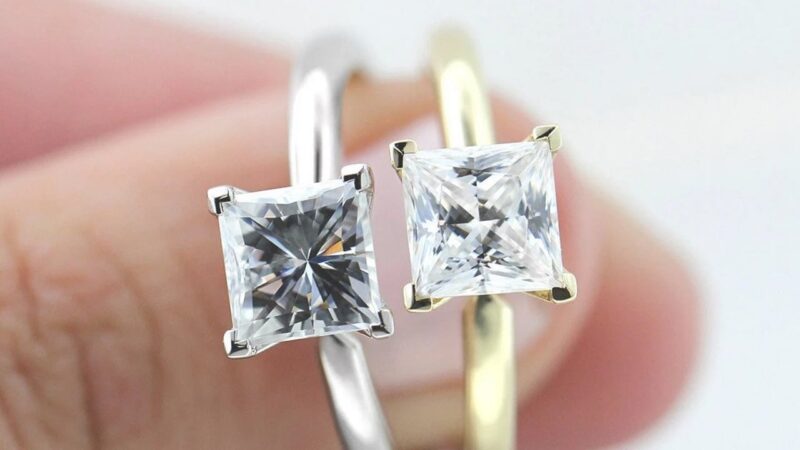Finding the perfect engagement ring for your future spouse is a difficult decision. When it comes to picking the right stone, deciding between diamonds and moissanite can be even more challenging. Both precious stones have unique features that make them desirable for different reasons, but what about durability?
Which of these two gems will last longer when used in an engagement ring? In this article we explore the differences between natural diamond and moissanite diamond with respect to their durability so you can make an informed decision when choosing which stone is best for your beloved’s special piece of jewelry.
Overview of Diamonds and Moissanite
Diamonds and moissanite are two of the most popular stones used for engagement rings. Diamonds have been a traditional choice for many centuries, prized for their strength, beauty, and sparkle. Moissanite is a newer option that has gained in popularity due to its affordability and durability compared to diamonds. In this article we will take an overview of both stones, looking at their characteristics and comparing them on various criteria such as hardness, clarity and brilliance.
When it comes to hardness diamonds reign supreme with a Mohs scale rating of 10 out of 10. This makes them one of the hardest substances found naturally on earth which also makes them very resistant to scratches or chips making them an ideal choice when it comes to durable engagement rings. On the other hand, Moissanite rates 9-9.5 on the Mohs Scale so while not quite as hard as the diamond it still provides good protection against daily wear and tear making them suitable for everyday use pieces such as engagement rings too.
In terms of clarity both Diamonds and Moissanites can appear flawless under magnification but often small differences can be spotted between these two gemstones which allow trained professionals or jewelers to tell them apart easily if needed even though few people would notice any difference without magnification tools being used firstly. With regards to brilliance, diamonds have more fire than moissanites however despite having less fire moissanite usually still shows off beautiful rainbow flashes when exposed in different lighting conditions making it look just like a genuine diamond from afar unless examined more closely by experienced individuals.
Comparing the Durability of Diamonds and Moissanite

When it comes to purchasing an engagement ring, one of the most important factors is durability. After all, a wedding band should last for many years as a symbol of commitment and love. But how do diamonds and moissanite compare in terms of strength and resilience? Diamonds are renowned for their incredible hardness; they boast the highest Mohs scale rating of 10. This means that diamonds can withstand scratches and other abrasions better than almost any other material on earth.
Furthermore, diamonds are extremely heat-resistant – they won’t shatter or discolor when exposed to high temperatures. All this makes them ideal for use in engagement rings because they will stay looking beautiful no matter what life throws at them! Moissanite on the other hand also boasts impressive durability ratings with a Mohs scale rating of 9.25-9.5 making it nearly as hard as diamond but with slightly less scratch resistance capabilities due to its lower hardness score.
However, moissanite does have some advantages over diamonds when it comes to durability; unlike diamonds, which can break if dropped from a height or hit by something hard enough, moissanite is extremely durable and unlikely to chip or crack under normal circumstances – making them great for daily wear rings! Overall both materials make excellent choices as engagement rings due to their strong resistant properties but ultimately you’ll need to decide which suits your lifestyle best based on your own personal preferences!
Factors that Affect Durability for Both Stones
When it comes to determining the durability of diamonds and moissanite for engagement rings, there are a few key factors that play an important role in their lasting quality. The first factor is hardness. On the Mohs scale of mineral hardness, diamonds rank 10 out of 10 while moissanite rates at 9.25-9.5 on the same scale. This indicates that diamonds have higher resistance to scratches than moissanite and therefore last longer without losing their shine or luster over time.
Another factor affecting durability is clarity rating; while both stones can be found in various levels of clarity, generally speaking those with higher ratings will retain their sparkle more effectively than lower-rated stones when exposed to external elements such as water or dirt particles from everyday wear and tear. Lastly, cut grade also plays a role in how well each stone holds up against impact; facets with proper angles and dimensions allow diamond light performance (and ultimately its brilliance) to remain intact for years due to better refraction capacity than poorly cut ones.
In contrast, moissanite’s superior toughness makes it less likely for it to chip or crack regardless of its cut grade compared to diamond – making it more resilient even under severe pressure or shocks like dropping your ring on hard surfaces accidentally
Pros and Cons of Each Stone for Engagement Rings

When it comes to engagement rings, the durability of each stone is a major factor in making the decision. Two stones that are popular for this purpose are diamonds and moissanite. Here we compare the pros and cons of each stone when it comes to their strength and resilience as an engagement ring material. Diamonds have long been known as one of the strongest materials in nature, so they make a great choice for an engagement ring that will last.
Their unparalleled hardness makes them difficult to scratch or chip and ensures they stand up well against everyday wear-and-tear activities such as gardening, cooking or cleaning. Diamonds also offer beautiful sparkles with their high refractive index, which helps give them unique fire and brilliance compared to other gems like moissanite. However, diamonds come with a hefty price tag due to rarity and demand on the market; you may pay considerably more than you would for another option like moissanite if budget is important when choosing your ring material. Moissanite offers many benefits as well: its extremely hard surface makes it nearly indestructible during day-to-day activities; it’s significantly less expensive than diamond but still shines brightly; plus its made from lab-created crystals rather than mined ones so there are no ethical concerns about sourcing materials responsibly unlike some other gemstones out there (like certain rubies).
But while Moissanites can be virtually immune from scratching or chipping under normal circumstances, they do lack some of diamonds’ superior strength due to their lower Mohs scale rating (9 versus 10). They also don’t have quite the same level of sophistication or sparkle associated with diamonds given their lesser refractive index value (2.65 vs 2.42).
Conclusion: Which is More Durable?
After comparing the two materials, diamonds, and moissanite, it is clear that when it comes to durability for an engagement ring, diamonds are more resilient. Diamonds boast a Mohs hardness scale of 10 compared to 9.25 for moissanite which makes them less prone to scratches or chips over time. In addition, diamonds have greater thermal conductivity than moissanite meaning they can better withstand extreme temperatures without melting or becoming discolored.
Finally, its worth noting that while both stones may last generations with proper care and maintenance, the diamond is much more resistant than its counterpart in terms of lasting quality and brilliance. Therefore, when deciding between these two materials for an engagement ring it is recommended that you choose the diamond as it will be more durable and provide many years of beauty and joy.



